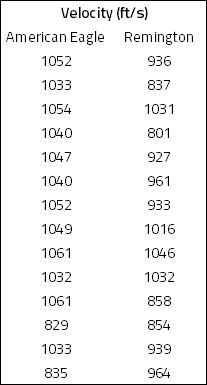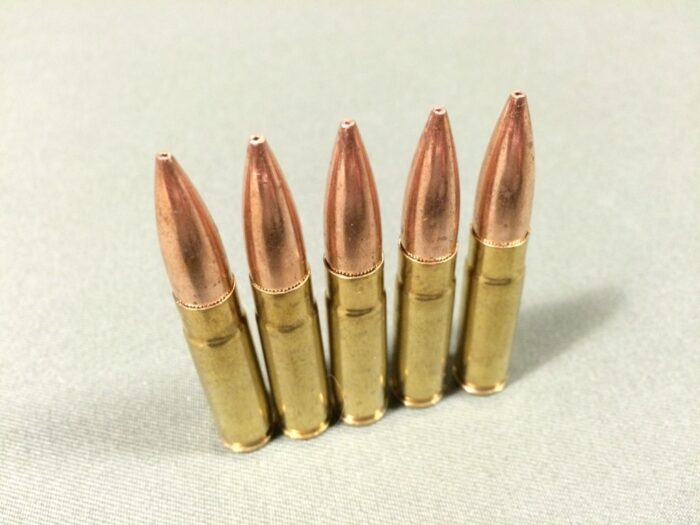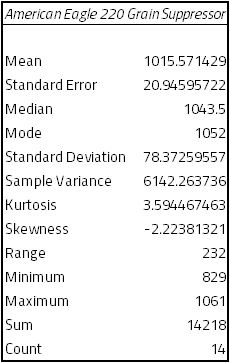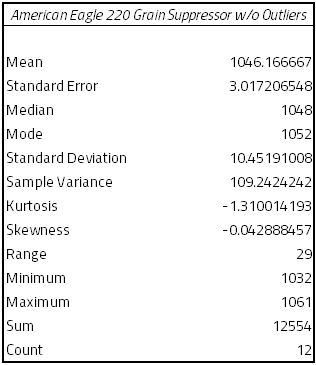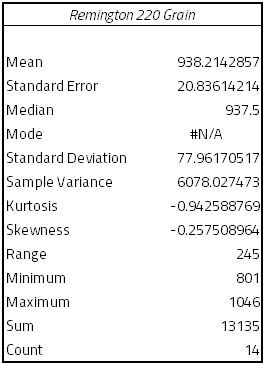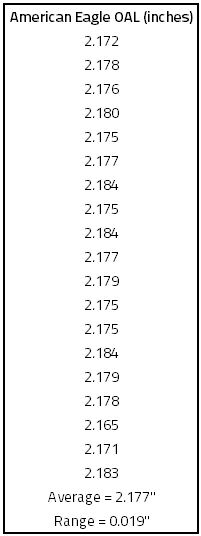American Eagle Subsonic .300 BLK Suppressor Ammo Review
A few weeks ago, the good people at Widener’s reached out to see if I would like to try some of the suppressor-optimized American Eagle subsonic .300 Blackout. With a 220-grain open tip match (OTM) bullet and advertised velocities of 1,000 ft/s, Federal’s relatively new load seemed perfect for silent shooting. Since I review my fair share of suppressors, so I was eager to get the ammunition out to the range.
Velocity
Because the new American Eagle rounds are supposedly optimized for suppressed use, my expectation going into my testing was that the ammo would be rather slow compared to my usual Remington fodder. I’ve noted here in the past that Remington subsonics are often louder than I would like and have a tendency to eclipse the sound barrier through my AR’s 16-inch barrel. My hope was that Federal’s product would come in slower and quieter.
As it turns out, the American Eagle rounds are actually quite a bit hotter than Remington’s. With my new Caldwell chronograph, I found that the American Eagle ammo’s muzzle velocity averaged 1015.57 ft/s versus 938.21 ft/s for the Remington load. As such, the two sounded essentially the same. Operating that close to the sound barrier (roughly 1,120 ft/s, depending on atmospheric conditions) means that some rounds may be supersonic after traveling through a 16-inch barrel, especially if they receive some freebore boost from a suppressor.
One thing to consider is that as a slightly hotter load, the American Eagle might be a better option for those who own short barreled rifles. .300 BLK doesn’t lose as much velocity as 5.56x45mm or other popular rounds when used in a short barrel, but the difference between a 16-inch barrel like mine and the 8.5-inch barrels that many shooters favor for the round is approximately 200 ft/s.
Consistency
As you can probably see from the data posted above, the American Eagle loads are remarkably consistent. If you remove the 829 ft/s and 835 ft/s values that I believe to be the result of equipment/setup issues, the remaining twelve rounds feature a standard deviation of just 10.45 ft/s and a range of only 29 ft/s. Leaving the questionable shots in the group delivers a standard deviation of 78.37 ft/s and a considerably larger range of 232 ft/s.
If you compare the American Eagle statistics to the incumbent Remington load, it is quite clear than Federal’s ammunition is more consistent. With my chronograph properly configured, the Remington subsonics rolled in with a standard deviation of 77.96 ft/s and a range of 245 ft/s. Even subjectively, the numbers “look” less consistent than the American Eagle offering and for the most part, the stats support that conclusion.
To check Federal’s loading consistency, I popped open one of the boxes and measured the overall length (OAL) of all twenty rounds. The values are posted below. As you can see, the OAL from round to round isn’t exactly the same, but for factory plinking ammo is reasonably consistent. Unfortunately, I was not able to measure bullet and powder weights.
Accuracy
Since the ammo is so consistent, it should be no surprise that it performs well in the accuracy (technically precision) department. At the range, I managed to consistently hold 2.5 minute of arc (MOA) groups using my Radical Firearms upper and my Bushnell Trophy TRS-25. I expect that my results would have been better with magnified optics, but 2.5 MOA is absolutely acceptable.
Conclusion
As a suppressor enthusiast, it always makes me happy to see manufacturers developing new subsonic ammo options, especially in an interesting caliber like .300 BLK. Federal’s new American Eagle stands out as another quality option in the growing.300 BLK space. The loads are exceptionally consistent as far as velocity and cartridge length are concerned, and the ammunition is every bit as precise as other high-quality options. In comparison to other subsonic offerings, American Eagle’s subsonic product brings slightly higher velocities, but the ammo should remain subsonic in most use cases. For SBR owners, the additional velocity should help to (marginally) flatten the bullet’s trajectory.
Of course, the problem remains that .300 BLK is far more expensive than other intermediate cartridges. At around $1 per round from Widener’s, Federal’s American Eagle is in line with other factory, subsonic .300 BLK options, but manufacturers as a whole need to find ways to bring prices down for this cartridge. Still, the American Eagle .300 BLK subsonic ammo is some of the best I’ve tried to date, and I have no problem recommending it to others.
An information security professional by day and gun blogger by night, Nathan started his firearms journey at 16 years old as a collector of C&R rifles. These days, you’re likely to find him shooting something a bit more modern – and usually equipped with a suppressor – but his passion for firearms with military heritage has never waned. Over the last five years, Nathan has written about a variety of firearms topics, including Second Amendment politics and gun and gear reviews. When he isn’t shooting or writing, Nathan nerds out over computers, 3D printing, and Star Wars.




